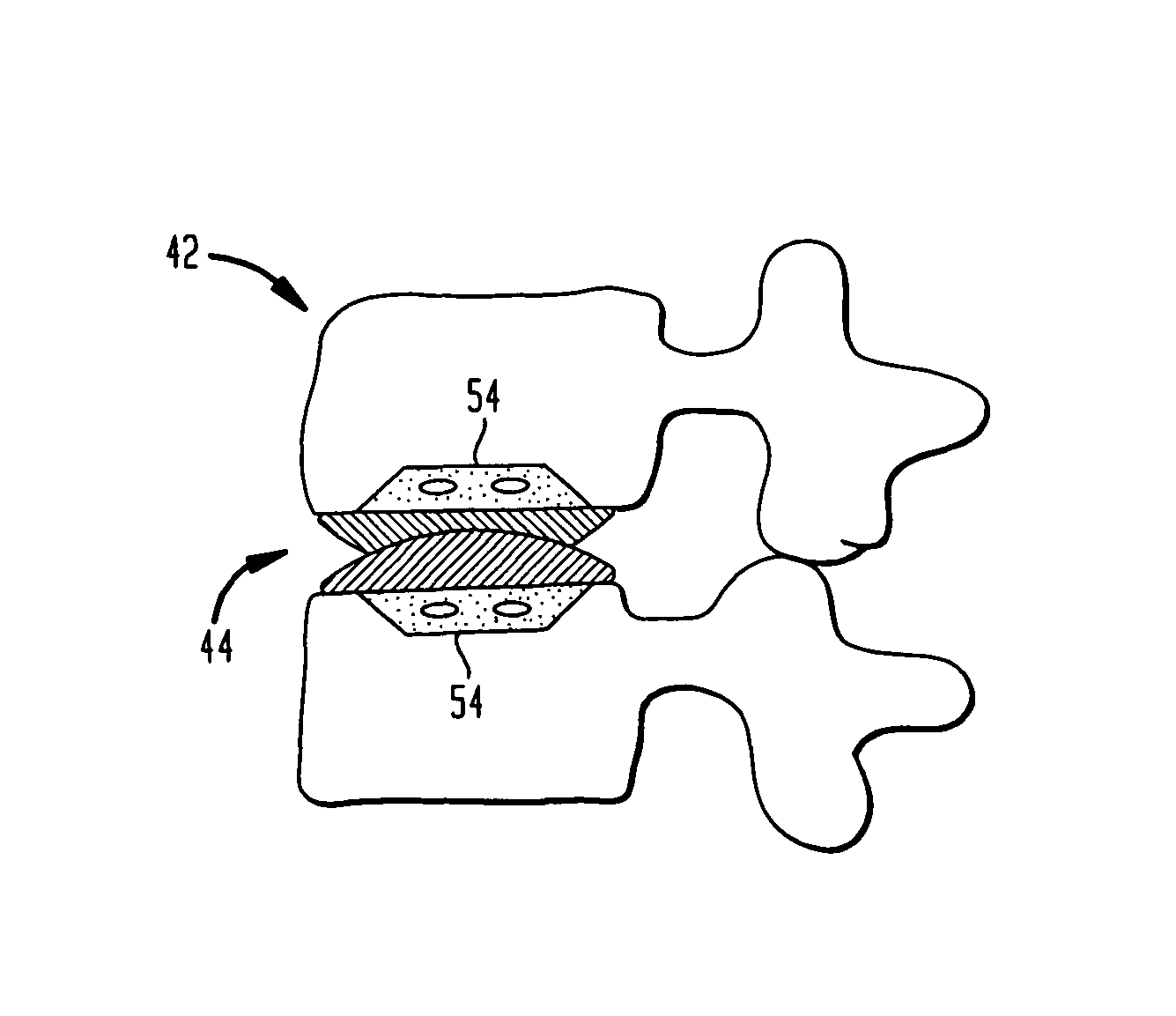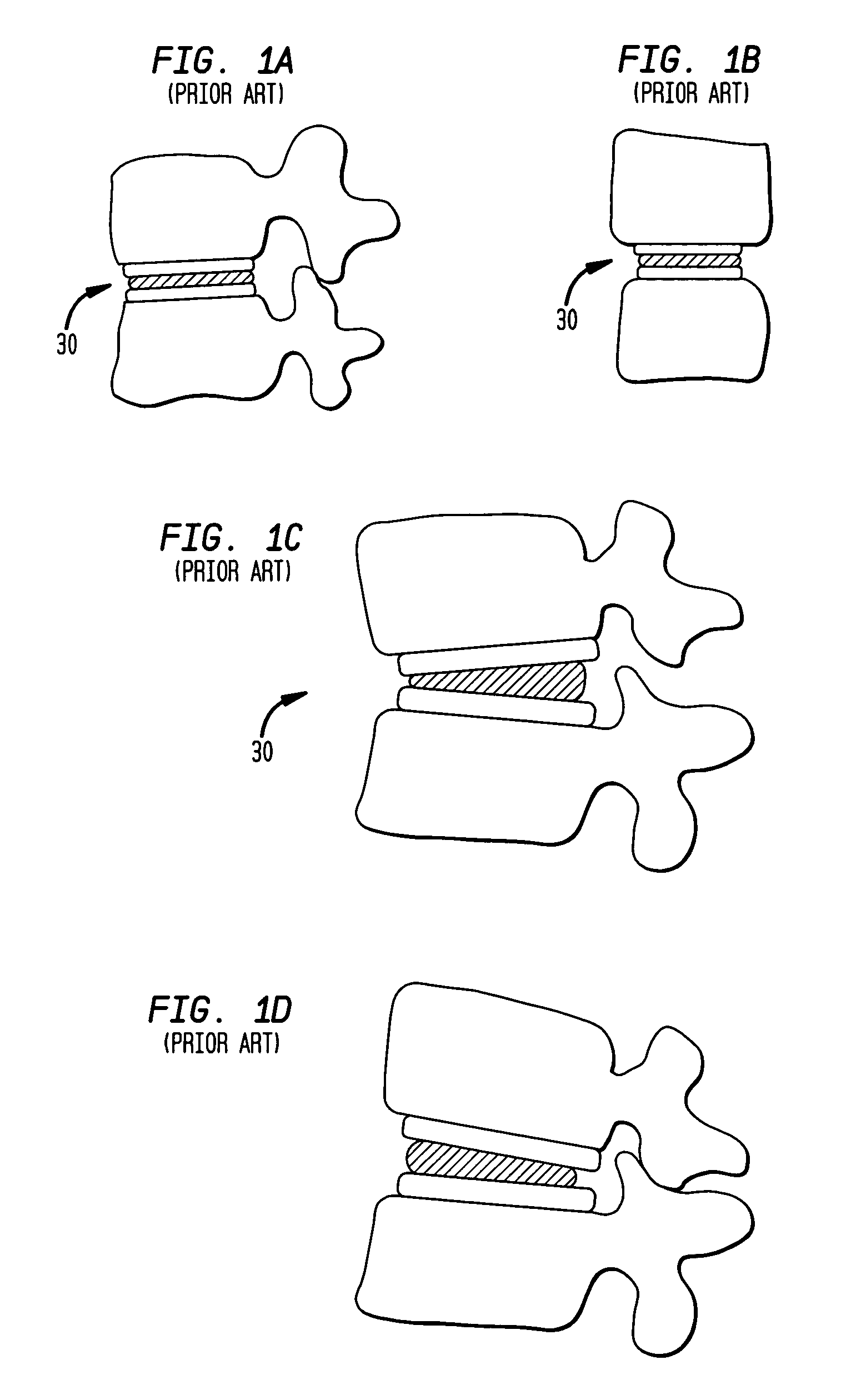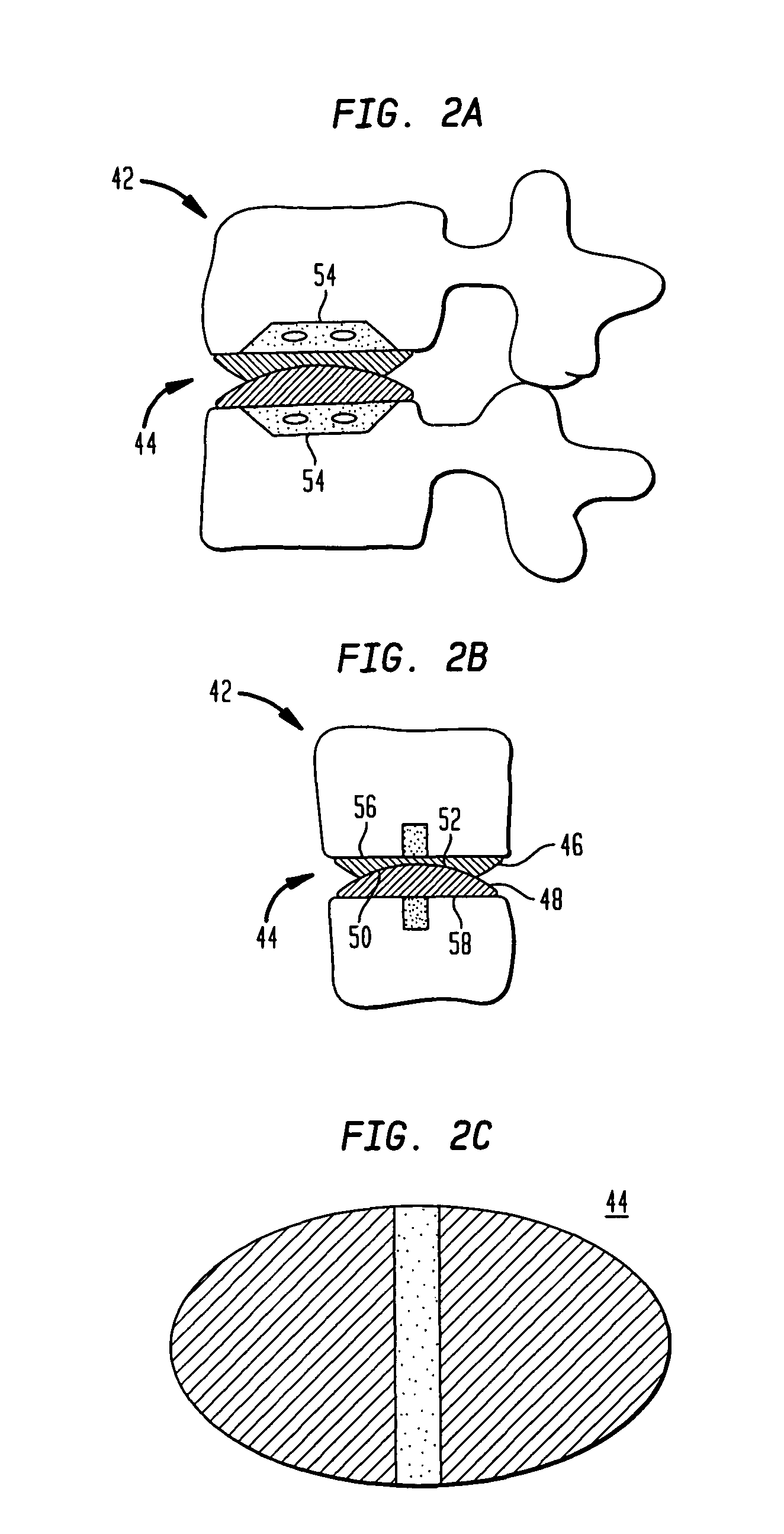Two-component artificial disc replacements
a technology of artificial discs and discs, applied in the field of artificial disc replacements, can solve the problems of inconvenient use, inconvenient maintenance, and inability to provide distraction across the disc space, and achieve the effects of reducing friction, high polishing, and promoting bone ingrowth
- Summary
- Abstract
- Description
- Claims
- Application Information
AI Technical Summary
Benefits of technology
Problems solved by technology
Method used
Image
Examples
Embodiment Construction
[0053]The present invention limits both facet joint pressure and facet joint motion. Broadly, the pressure on the facet joints is lowered from the preoperative pressure by distracting the disc space. The present invention also reduces the facet joint pressure by eliminating or significantly reducing motion across the ADR that increase the pressure on the facet joints. Specifically, ADR design in accordance with the various embodiments restricts spinal extension, rotation, translation, and lateral bending. Forward flexion is not restricted as forward flexion decreases the pressure on the facet joints.
[0054]FIG. 3A is a simplified drawing of a restricted motion artificial disc replacement (ADR) 40 constructed in accordance with this invention. FIG. 2A is a sagittal cross section of the spine 42 and an ADR 44 related to that shown in FIG. 3A. FIG. 2B is a coronal cross section of the spine 42 and the ADR 44 of FIG. 2A. This embodiment has two components 46, 48 one with a concave articu...
PUM
 Login to View More
Login to View More Abstract
Description
Claims
Application Information
 Login to View More
Login to View More - R&D
- Intellectual Property
- Life Sciences
- Materials
- Tech Scout
- Unparalleled Data Quality
- Higher Quality Content
- 60% Fewer Hallucinations
Browse by: Latest US Patents, China's latest patents, Technical Efficacy Thesaurus, Application Domain, Technology Topic, Popular Technical Reports.
© 2025 PatSnap. All rights reserved.Legal|Privacy policy|Modern Slavery Act Transparency Statement|Sitemap|About US| Contact US: help@patsnap.com



